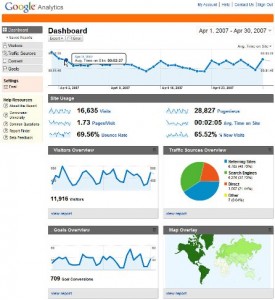Digital marketing 101
March 9, 2011
Quality content published in some significant quantity, and engineered to be easily found in search engines is a recipe for a successful digital publishing business.
Throughout the course of my blog, you have learned how tweet, how to use photography, how to vlog, and how to maintain your comments area. The last thing you need to know to be fully prepared for the real world of blogging is how to market yourself.
The one phrase you need to remember as you strive for efficiency and marketability in your blog is search engine optimization. This phenomenon is the process of writing your articles in a way that will be easily recognized by search engine spiders who search the Internet for new websites or information.
According to Briggs, “content is king” for SEO because the better the content you have in an article, the more likely a robot or spider will be to pick it up for indexing. “Linking is queen” because if other websites recognize that you have linked to them, they may return the favor, increasing your authority with search engines.
Along with content and linking, there are also several other ways to increase your “Google cred.” The first way is to use clear title tags because search engines look at headlines before anything else. The second way is to use HTML meta tags, or tags that provide information about an article, even though a viewer cannot see that information.
After you get your blog up and running and begin acquiring an audience through search engines, you will likely want to know how your website is doing.
The following is a list of the bakers dozen, or items that you should be regularly tracking so you have an idea of how well your website or blog is performing.
- Total news stories per day
- News stories by topic or section
- Total blog posts per day
- Blog posts by specific blog
- Slideshows per week
- Video stories per week
- Podcasts or other audio stories
- News updates
- Breaking news e-mail alerts
- SMS or other mobile news alerts
- E-mail newsletters that are not sent automatically
- Twitter, Facebook or other social network posts
- User-generated content
Along with the bakers dozen, you should also track the big three of web traffic: pageviews, visits and unique visitors compared, and engagement and referrers. These things are more difficult for an individual to track, but never fear, there is plenty of software out there that can track these things for you. One of the most popular websites for web analyzation is Google Analytics, a free program offered by none other than Google.
Once you see how your website is performing, you will be able to make goals and adjust your current business plan. As Briggs so eloquently puts it, “track. Measure. Adapt. It’s the way the Web works.”
Entry Filed under: Briggs "Journalism Next" Chapter Reviews. Posted in Briggs "Journalism Next" Chapter Reviews Tags: Chapter 11; search engine optimization, Google Analytics, Meta tags, Title tags.




Trackback this post | Subscribe to the comments via RSS Feed